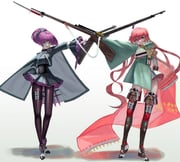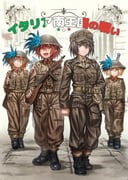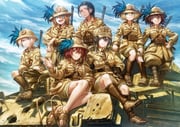carcano m91/38
After the Great War and the second war in Ethiopia, the Italian military eagerly searched for a new cartridge to replace the middling performance of 6.5x52mm Carcano. Aiming for higher penetration, flatter trajectory, and more damage, the Italians would ultimately come to the 7.35x51mm Carcano cartridge. This cartridge featured a Spitzer-style projectile instead of the 6.5 Carcano's round-nosed projectile. Using the same en-bloc clip-fed bolt-action design of the M91 Carcano, other notable changes in the M38 were cutting overall length by over ten inches and fixing the rear sights at a 200 meter distance, believing this would the average engagement distance in modern warfare.
Despite this ambition, the switch to 7.35 Carcano would become to strenuous and costly on logistics. Another issue included the Italian military's decision to chop the barrel of existing M1891s into M38s, ignoring how the old twist rate would affect the accuracy of the rifle with the newer, hotter ammunition, proving a detriment to a number of the rifles' accuracy. By mid 1940 the military would revert back to 6.5 Carcano, rebarreling most M38s with the few remaining 7.35 Carcano rifles relegated to auxiliary troops and paramilitary organizations. Under the new M91/38s designation, the rifle would continue production in Italy's earlier caliber of choice.
The M38 Carcano would serve as the backbone of the Italian army for much of World War II, though they weren’t shy about offering them to allies. Finland would accept many during the Winter War against the Soviet Union. Germany’s Afrika Corps would procure some M38s for themselves, rechambering them for 7.92x57mm Mauser. They would see combat throughout the Mediterranean and Eastern Fronts. Following the ousting of Benito Mussolini in 1943, some Italian troops in areas such as Greece and Yugoslavia would join the rebel troops and fight off the Germans. Since the end of World War II, these rifles have found their way into the hands of rebels and insurgents alike, seen most recently in conflicts such as the Libyan Civil War.
Since the end of the War, the Carcano has been a popular choice on the consumer market, particularly with hunting. With the short length, light weight, and the ability to mount an aftermarket scope on the rifle it was common to see it in the hands of hunters in the following decades alongside other wartime rifles.



